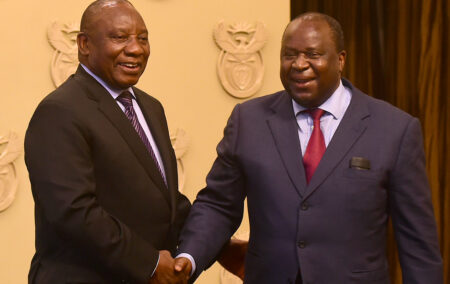A month has passed since the National Treasury published its “economic strategy” proposals. Some 700 submissions about them have evidently been made. Regrettably, however, the proposals have not received enough of the public support they merit.
Many pronouncements from the ruling party blame low economic growth on racial inequality and the persistence of colonialism and apartheid. Despite its tedious title – Economic Transformation, Inclusive Growth, and Competitiveness: Towards an Economic Strategy for South Africa – the Treasury document is free of such red herrings. It goes straight to policy.
Business, ratings agencies, and journalists often plead for “structural reform”, without specifying what they mean. The other favourite South African ploy is to fall back on calling for a new “social compact”. This too avoids talking about anything specific. Yet another favourite game is to punt “policy certainty”, without specifying the content of the policies required, let alone recognising that poor policies may do more harm than good.
A further favourite is to boast that we have “excellent policies” which lack only implementation. This overlooks the fact that many policies and/or proposals are thoroughly bad, and that the country is better off without them: the unaffordable national health insurance system, expropriation without compensation, and “prescribed assets”, to name but a few on a long and wearisome list.
Even though it suggests a (limited) social compact, the Treasury document is a welcome contrast to all of this. It has taken the lead in putting forward important microeconomic proposals. Few are new, many having been urged down the years by various organisations favouring economic liberalisation, the IRR among them. But their importance is that they are all now strung together in a document emanating from the Treasury.
Implicit in the document is the recognition that regulation has come to the end of the road, its ruinous effects demonstrated by the fact that South Africa has plummeted from 32nd out of 181 on the World Bank’s “ease of doing business index” in 2008 to 82nd out of 190 in 2018. In remarks prepared for the World Economic Forum in Cape Town at the beginning of this month, President Cyril Ramaphosa declared that his government had set itself the role of climbing from 82nd to somewhere in the top 50. He has not indicated what reforms he contemplates to do this. The Treasury has now begun to fill the gap.
Its document could have proposed plenty more to encourage investing in South Africa. Arguably, however, its virtue is its modesty. Unlike the National Development Plan (NDP) adopted in September 2012, it is free of fantasies about a “developmental state” empowered to make “intensive” interventions to deal with poverty and unemployment. Although the Treasury document reiterates support for dirigiste policies such as local procurement, its overall thrust is in the direction of deregulation and greater liberalisation, especially of small business and the labour market, along with (limited) privatisation.
The document is bang on target with its emphasis on economic growth. Down the years there have been attempts both in South Africa and elsewhere to denigrate growth, the most notorious example being The Limits to Growth published by the Club of Rome in 1972. Yet, as history demonstrates beyond question, economic growth is fundamental to raising living standards and reducing poverty.
The document has been criticised in that it is not the product of a consensus among the ruling party and its communist and trade union allies. This is not a weakness, but a strength. The search for such a consensus would have necessitated endless rounds of consultations, the result of which would have been an anodyne document to which the communists and trade unions would still have objected. Instead of wasting time on fruitless rigmarole, the Treasury has provided leadership in South Africa’s battle of ideas. The challenge now is for the minister of finance and the Treasury to go over the heads of their ideological opponents and market their ideas.
There is a risk that the Treasury’s proposed strategy will fall by the wayside, as eventually happened to Growth, Employment, and Redistribution (Gear), published in 1996. This must not be allowed to happen. Captains of industry, organised business, public servants, politicians, journalists, economists, and those few non-governmental organisations committed to faster growth need to speak up in favour of the liberalising aspects of the Treasury document, loudly and clearly.
* Kane-Berman is a policy fellow at the IRR, a think-tank that promotes political and economic freedom. This column is based on the IRR’s submission to the Treasury on its document. Readers are invited to take a stand with the IRR by clicking here or sending an SMS with your name to 32823. Each SMS costs R1. Ts and Cs apply.

